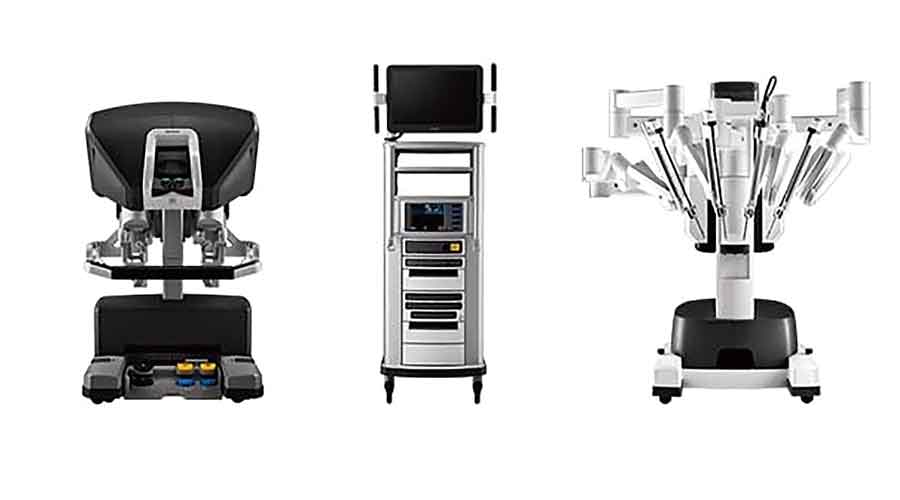A robotic arm that is slender and has greater flexibility and reach than a human hand, promises to make surgeries more precise and recovery easier.
The robot is being used for cancer surgeries not only for lesser hospital stay but also better cosmetic results, said doctors.
Several private hospitals in Kolkata have started using robots for cancer surgeries and some are in the process of installing new generation robots.
Cosmetic results
To remove tumours in breasts, conventional open surgeries leave big scars and also there is a need for reconstruction surgery.
“But if the procedure is done with the robot, there will be a small 3 to 4cm cut in the armpit which is hidden," said Neha Choudhary, breast cancer surgeon at Narayana Superspeciality Hospital which has recently installed fourth-generation Da Vinci robotic surgery for cost of more than Rs 8 crore. “The scar would be three to four times bigger in an open surgery," she said.
According to Choudhary, manually, using a surgeon's hand, it is difficult to access the tumor in the breast through the armpit. But, the slender, flexible and longer robotic arm can access the tumor through the armpit.
In case of thyroid cancer too, robotic surgery gives better results, said doctors.
“The open surgery leaves a long scar in the neck. But in robotic surgery, a small incision is done behind the ear and hairline,” said Shreya Bhattacharya, head and neck surgical oncologist. “This is important, especially for young women,” she said.
Less morbidity
In case of head and neck surgery, to remove malignant tumors from the tonsil or base of the tongue, cancer surgeons have to cut the jaw bones for proper access.
“This leads to difficulty in speech and swallowing for the patient,” said Bhattacharya. “However, the robotic arm being one and half times longer than the human arm and also rotates better, there is no need to cut the jaw bones. This gives better quality of life,” she said.
In an open surgery, a patient needs to stay in the hospital for about two weeks on an average. The total recovery time would be more than a month. But in a robotic surgery, the patient would be discharged in two to three days.
Better access
Urological organs are deep seated and difficult to access manually and so needs big cuts, said Tarun Jindal, uro-oncologist at Narayana Superspeciality Hospital.
“To access such deep-seated organs, in a general surgery, a surgeon has to make a cut of 25 cm. But with the help of a robotic arm, there would be four incisions, each 8mm,” said Jindal.
In men, the pelvis is also deep seated and narrow, making it even more difficult to access for removing tumors.
“Before surgery, radiation therapy is used to reduce the size of the tumor. This makes the pelvis even more difficult to access even with help of laparoscopic surgery,” said surgical gastroenterologist Subhayu Banerjee. “The human arm can rotate 180 de grees but a robotic arm can rotate 360 degrees,” he said.
Gynae oncologist and robotic surgeon Kaustav Basu said the robot brings down the time of surgery.
“To access an ovary, uterus or cervix and remove the tumors, it can take even upto 10 hours for the entire process. A robotic arm can do it in four to five hours,” said Basu.
The robotic arm also helps in accessing small tumors in the lungs and better detection of vessel to avoid major blood loss during a surgery, said Amitabha Chakraborti, thoracic surgeon at Narayana Superspeciality.
